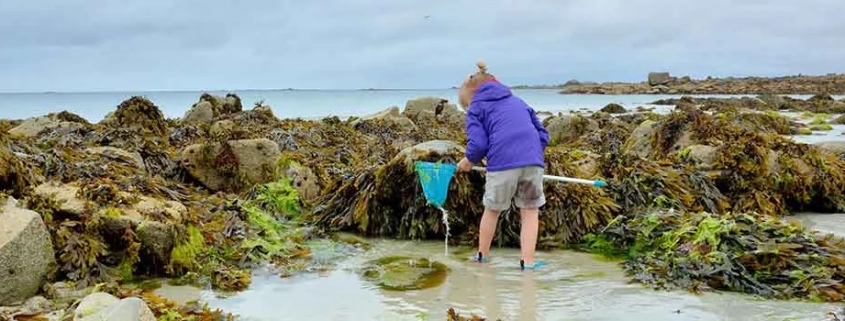H2S on the beach
Of course, there are also green algae, for which large-scale strandings have increased significantly and intensified along the Brittany coast, but there are other algae that are equally 'of interest'.
When these organic materials decompose (anaerobic fermentation), they release a gas that is easily recognized by its “rotten egg” odor at very low concentrations and disappears at higher concentrations. This is hydrogen sulfide (H2S).
Hydrogen sulfide is considered a toxic and dangerous gas. It is a colorless gas and heavier than air. Hydrogen sulfide is a stable compound at normal temperatures, but at very high temperatures it can decompose and eventually burn in air, creating toxic sulfur oxide fumes. Prolonged exposure and breathing of this gas can lead to serious health consequences. Indeed, if the gas concentration reaches or exceeds 1000 ppm by volume, it can cause damage to the central nervous system, with symptoms of loss of consciousness and respiratory distress. These are the main health risks that people face if exposed to this gas. If the concentration of hydrogen sulfide is less than 1,000 ppm by volume, the main health effects will be irritation of the mucous membranes of the eyes and respiratory tract, conjunctivitis, rhinitis and dyspnea, or degeneration of the olfactory nerve (making the gas impossible to detect).
There are devices to detect the presence of gas, in this case hydrogen sulfide, in the air in a given area. The safest way to prevent hydrogen sulfide is to use a portable H2S gas detector (a single-gas detector, such as the Senko SGT disposable gas detector, or a multi-gas detector, such as a portable 4-gas detector), which will indicate the presence of hydrogen sulfide in the atmosphere. The detector will also display the instantaneous concentration of the gas, TWA (Mean Exposure Limit) and STEL (Threshold Limit Value). If a limit value is exceeded, the gas detector will emit an audible signal (up to 95 dBA) and a light signal.
If H2S is detected, you will need to take the necessary precautions to ensure optimum safety and use appropriate protection, such as a respiratory protection mask with a type B filter cartridge (ideally B2). You can also use a half mask (anti-gas), but hydrogen sulfide is still quite irritating to the eyes and a full mask will protect them better than a half mask…
So be careful even on holidays and beaches…
Have a nice swim!



